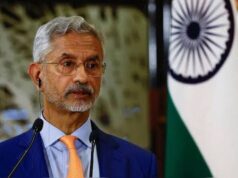INS Tushil among World’s most advanced frigate commissioned

INS Tushil, a multi-role stealth guided missile frigate was commissioned on 09 Dec 24 at Yantar Shipyard in Kaliningrad, Russia.
This event further boosted India’s naval capabilities and its long-standing defence partnership with Russia. The Commissioning ceremony was graced by Shri Rajnath Singh,Bharat’s Raksha Mantri.
INS Tushil is an upgraded Krivak-III class frigate under Project 1135.6. It is the seventh ship in this series, with six others already operational in the Indian Navy, including three Talwar-class and three Teg-class frigates.
One more ship INS Tamal should be commissioned by March 25. Two more are being built at Goa Shipyard Limited under technology transfer. The construction saw repeated delays initially due to COVID and then the war in Ukraine.
The keel for INS Triput was laid by GSL on 29th January 2021 followed by the second ship INS on 18th June 2021. Triput will be delivered in 2026 and the second ship in the following 6 months.
The name “Tushil” translates to “protector shield,” reflecting its intended role in safeguarding India’s maritime interests. Its motto—“Nirbhay, Abhedya Aur Balsheel” (Fearless, Indomitable, and Resolute)—emphasizes the ship’s mission and the Navy’s commitment to national security.
INS Tushil is designed for blue water operations across the spectrum of naval warfare in all four dimensions air, surface, underwater and electromagnetic.
It is armed with a range of advanced weapons, including the Brahmos supersonic cruise missiles, vertically-launched Shtil Surface-to-Air missiles with enhanced ranges, upgraded medium-range anti-air and surface gun with advanced stealth features, optically-controlled close-range rapid fire gun system, anti-submarine torpedoes and rockets and advanced electronic warfare and communication suite.
The ship is also capable of embarking the upgraded anti-submarine and airborne early warning helicopters, the Kamov 28 and Kamov 31.
The ship is powered by an advanced gas turbine propulsion plant with state-of-the-art controls and is capable of achieving speeds in excess of 30 knots.
The frigate measures 125 meters in length and weighs approximately 3,900 tons. It integrates advanced Russian and Indian technologies, boasting enhanced stealth features and stability characteristics.
It has a crew of 250.Compared to the original six frigates, the entire hull of the ships at Goa have been built being built using Indian steel.
Multiple major equipment have been substituted with indigenous equivalents including the Combat Management System, Surface Search Radar (SSR-4), Electronic Countermeasure System (Shakti) and Hull Mounted SONAR (HUMSA NG).
Unlike the previous ships in the class featuring 100mm A-190E and two twin 533mm torpedo launchers, the Triput subclass will feature 76mm SRGM and two indigenous Triple Torpedo Launchers (ITTL) for 324mm lightweight torpedoes. The new ships will also feature the UVLM for BrahMos.
The UVLM will also accommodate the subsonic LR-LACM being developed by DRDO (Defence Research and Development Organisation).
Once the seven ships of Nilgiri series join the Indian Navy by 2028, India will have 23 modern frigates against the current requirement of 32 frigates.
Therefore the steel cutting and keel laying of 7-9 additional frigates under Project-17 Bravo, must commence at the earliest.
No wonder at the Commissioning ceremony at Kaliningrad, Raksha Mantri reiterated Indian Navy’s commitment to peace and security in the Indian Ocean Region (IOR).
“Our Navy has foiled the designs of piracy, arms and drug smugglers and non-state actors in various hotspots.
From the Gulf of Oman to the Gulf of Aden, from Suez to Malacca & from Australia to Madagascar, the Indian Navy is playing the essential role of a net security provider in IOR.
India, along with its friendly countries, believes in ensuring that maritime trade in the region remains safe and secure, thereby promoting unhindered trade across the sea.”




